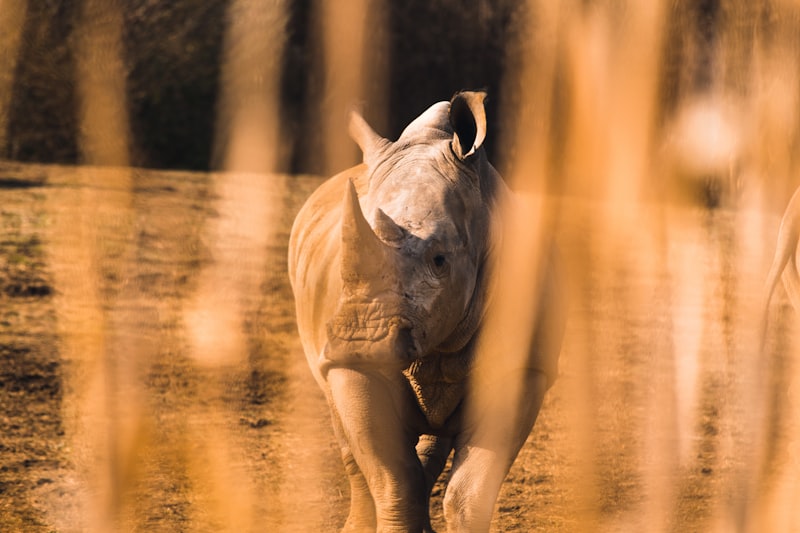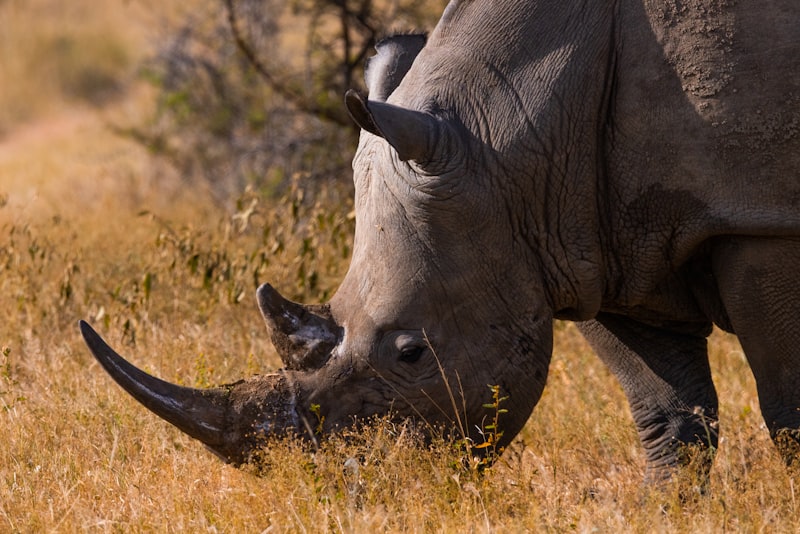
Imagine a world where majestic elephants roam freely across vast savannas, where tigers stealthily navigate dense forests, and where rhinos graze peacefully in their habitats. This picturesque scene, however, is under constant threat from the grim realities of poaching and illegal wildlife trade.
Poaching, driven by the demand for exotic animal products like ivory, rhino horns, and tiger bones, poses a severe threat to endangered species worldwide. The brutal practice of killing these animals for profit not only disrupts natural ecosystems but also pushes many species closer to extinction.
Illegal wildlife trade, fueled by a lucrative market for exotic pets, rare plants, and animal parts used in traditional medicine, further exacerbates this crisis. It’s a global issue that transcends borders, impacting diverse species across continents.
But why should we care? The answer lies in the delicate balance of nature. Each species plays a unique role in maintaining ecosystem stability. Elephants, for instance, are crucial for seed dispersal in forests, while predators like lions regulate prey populations, preventing overgrazing.
By combating poaching and illegal wildlife trade, we protect not just individual animals but entire habitats and the services they provide to humanity. From carbon sequestration to water filtration, healthy ecosystems are vital for our survival.
Awareness is the first step towards action. Through education, community involvement, and stringent law enforcement, we can dismantle the networks that drive these illicit activities. It’s about empowering local communities, promoting sustainable livelihoods, and advocating for stronger environmental laws.
Together, we have the power to make a difference. By raising awareness and taking decisive action against poaching and illegal wildlife trade, we can ensure a future where wildlife thrives and our planet remains rich in biodiversity.
Silent Extinction: The Urgent Need to Combat Wildlife Poaching
Wildlife poaching isn’t just about greed; it’s driven by a complex web of factors, from poverty and lack of education to organized crime and demand for exotic products. Ivory, rhino horns, and exotic pets fetch exorbitant prices on the black market, driving hunters to decimate populations without regard for consequences. The pangolin, known as the world’s most trafficked mammal, faces a bleak future as its scales are sought after for unfounded medicinal properties.
But it’s not all doom and gloom. Conservation efforts around the globe are making strides in protecting endangered species. From anti-poaching patrols in Africa to legislative measures against wildlife trafficking in Asia, there’s a growing global awareness and commitment to combat this crisis.
However, the battle is far from over. Each of us has a role to play in this fight for the survival of our planet’s wildlife. Whether it’s supporting ethical wildlife tourism, educating communities about sustainable practices, or advocating for stronger wildlife protection laws, every action counts.
Imagine a world where future generations can still witness the magnificence of a rhinoceros or hear the haunting call of a howler monkey echoing through the rainforest. This is not just a dream; it’s a tangible goal within our reach if we act now.
Together, we can turn the tide against wildlife poaching. Our planet’s biodiversity is a precious gift, and it’s up to us to protect it for generations to come. The time to act is now.
Unseen Victims: How Illegal Wildlife Trade Threatens Global Biodiversity
From the lush rainforests of the Amazon to the remote plains of Africa, the impact reverberates. Majestic creatures like tigers, elephants, and rhinos face imminent peril as their populations dwindle. Poaching rings and smuggling networks operate with cunning efficiency, driven by lucrative profits at the expense of ecological balance.
The consequences ripple beyond the animals themselves. Ecosystems suffer destabilization, disrupting natural cycles essential for life. The loss of keystone species can lead to cascading effects, endangering entire habitats and the communities that depend on them.
Efforts to combat this crisis are multifaceted but face formidable challenges. Law enforcement struggles against sophisticated criminal syndicates, while international cooperation often falls short of halting the illicit flow. Awareness campaigns aim to educate and empower, emphasizing the ethical and ecological repercussions of supporting the trade.
As consumers, our choices wield power. Each decision to refrain from purchasing wildlife products, whether consciously crafted from ivory or subtly concealed within trinkets, contributes to safeguarding biodiversity. By fostering empathy and understanding, we cultivate a shared responsibility to protect the voiceless victims of illegal wildlife trade.
Behind the Hunt: Exposing the Networks Fueling Wildlife Trafficking
Have you ever wondered about the hidden world behind the trafficking of wildlife? It’s a shadowy realm where endangered species are commodified for profit, driven by networks that span continents and exploit nature’s most vulnerable inhabitants.

In the heart of this illicit trade are organized syndicates that operate with meticulous planning and ruthless efficiency. Like unseen threads in a vast web, these networks connect poachers, smugglers, and buyers across borders. They trade in exotic creatures, from majestic elephants to elusive big cats, fueling a black market that thrives on rarity and exclusivity.
Picture this: deep in remote forests and savannahs, poachers stalk their prey under cover of darkness, armed with sophisticated equipment designed to evade detection. Their mission? To capture and transport animals destined for lucrative markets around the globe. It’s a dangerous game of supply and demand, where the stakes are high and the consequences for biodiversity devastating.
But what drives this underground industry? Money, power, and the insatiable appetite for exotic pets and traditional medicines. For some, owning a rare species is a status symbol, a display of wealth and influence. For others, wildlife parts are sought after for their perceived medicinal properties, despite lacking scientific evidence.
The implications are profound. Beyond the immediate loss of species, wildlife trafficking fuels corruption, undermines conservation efforts, and threatens global biodiversity. It’s a multi-billion dollar enterprise that operates largely in the shadows, exploiting regulatory loopholes and weak enforcement.
Yet, amidst the darkness, there is hope. Conservationists, law enforcement agencies, and grassroots organizations are working tirelessly to disrupt these networks and protect vulnerable species. Through international cooperation and public awareness, efforts are being made to dismantle trafficking operations and promote sustainable alternatives.
Saving Our Icons: Strategies for Protecting Endangered Species from Poachers
Firstly, enhancing surveillance and monitoring efforts in vulnerable habitats is paramount. Utilizing advanced technology such as drones and satellite imaging can significantly bolster our ability to detect and deter poaching activities. By improving real-time data collection and analysis, conservationists can swiftly respond to threats and protect endangered species before it’s too late.
Education and community engagement play pivotal roles in changing attitudes towards wildlife conservation. Educating local communities about the ecological importance of endangered species fosters a sense of stewardship and pride in their natural heritage. Empowering communities to become guardians of their local wildlife can create a formidable defense against poaching activities, turning them into allies in conservation efforts.
Strategic partnerships between governments, conservation organizations, and law enforcement agencies are indispensable. Collaborative initiatives enable the pooling of resources, expertise, and intelligence to disrupt poaching networks effectively. By coordinating efforts across borders and jurisdictions, we can dismantle criminal syndicates involved in wildlife trafficking and ensure the enforcement of stringent anti-poaching laws.
Implementing sustainable livelihood alternatives for communities dependent on natural resources can mitigate the socio-economic drivers of poaching. Offering viable economic opportunities, such as eco-tourism and sustainable agriculture, reduces the reliance on wildlife exploitation for income. By promoting sustainable practices, we can alleviate poverty while safeguarding biodiversity.
Safeguarding endangered species from poachers demands a unified and proactive approach. By leveraging technological innovations, fostering community stewardship, forging strategic partnerships, and promoting sustainable livelihoods, we can mitigate the threats posed by poaching and ensure a future where our iconic wildlife thrives in their natural habitats.
Frequently Asked Questions
How does poaching impact biodiversity and ecosystems?
Learn how poaching affects biodiversity and ecosystems. Discover how illegal hunting of wildlife disrupts natural balances, threatens endangered species, and damages habitats, leading to long-term ecological harm.
What are the key signs of wildlife products obtained illegally?
Learn about the key signs indicating wildlife products obtained illegally, including unusual packaging, absence of legal certification or permits, unfamiliar brands or untraceable sources, and suspiciously low prices.
How can individuals contribute to preventing poaching and wildlife trafficking?
Learn how individuals can help prevent poaching and wildlife trafficking through actions such as supporting conservation organizations, reporting suspicious activities to authorities, avoiding purchasing wildlife products, and advocating for stronger wildlife protection laws.
What are some successful initiatives in combating illegal wildlife trade?
Discover successful initiatives combating illegal wildlife trade worldwide. Learn about effective strategies employed by governments, NGOs, and international organizations to protect endangered species and ecosystems.
What are the main causes of poaching and illegal wildlife trade?
Learn about the main causes behind poaching and illegal wildlife trade, including factors like demand for exotic pets, traditional medicine, and luxury goods, as well as poverty, weak law enforcement, and inadequate awareness about conservation.


